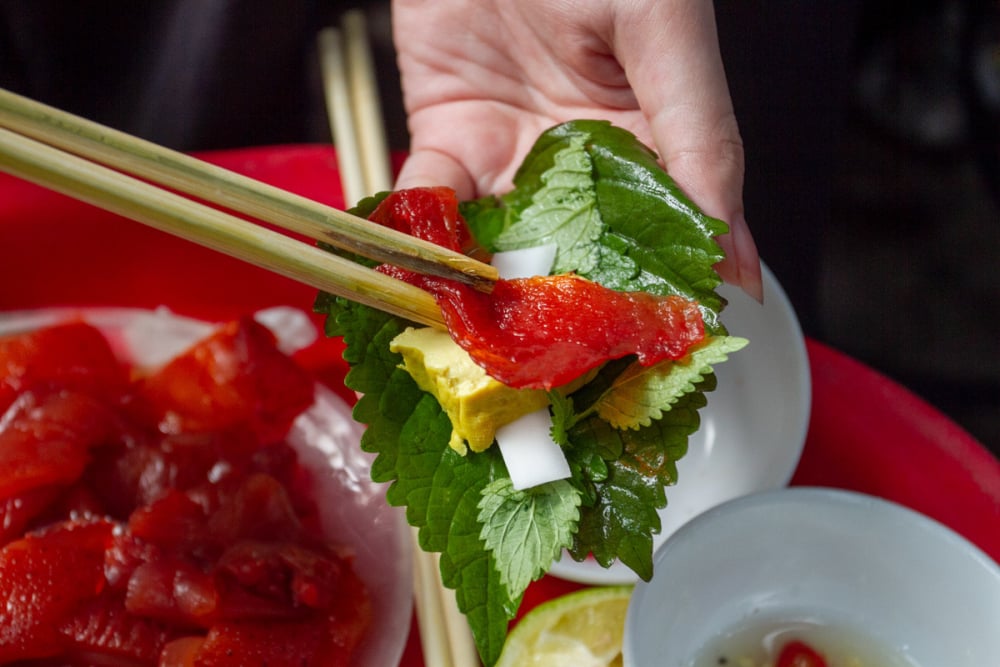Hanoi is not only the capital of a thousand years of civilization with its quiet historical relics but also a familiar destination for food lovers. Not only pho, bun cha or banh mi, Hanoi cuisine is a colorful picture, where each season brings its own unique flavors with seasonal dishes that attract tourists.
When the spring rains gradually dissipate, giving way to the warm sunshine of March, the whole city seems to awaken from its long winter sleep. That is also the time when Hanoian food lovers begin to whisper to each other about a special delicacy that only appears at this time of the season - red jellyfish. From March to June, Hanoians eagerly enjoy red jellyfish. Although this rustic dish has been "storming" the streets of Hanoi for many years, few people know that its origin comes from the port city of Hai Phong.
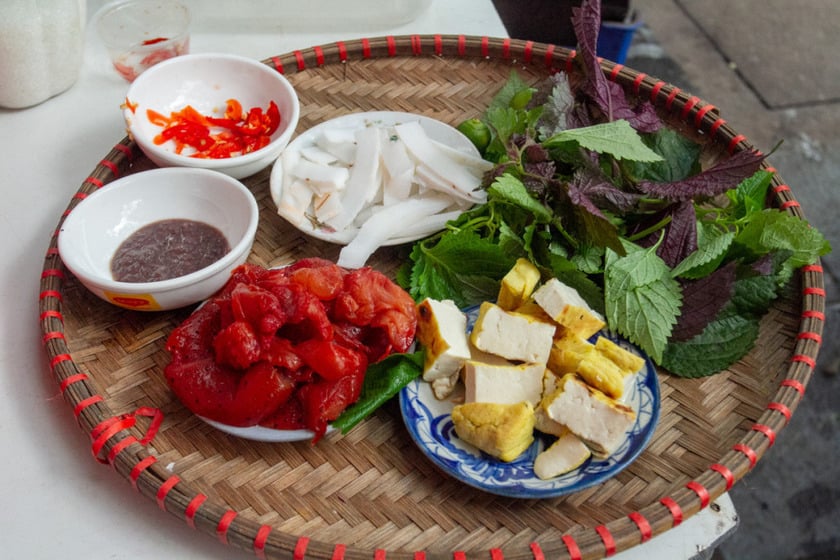
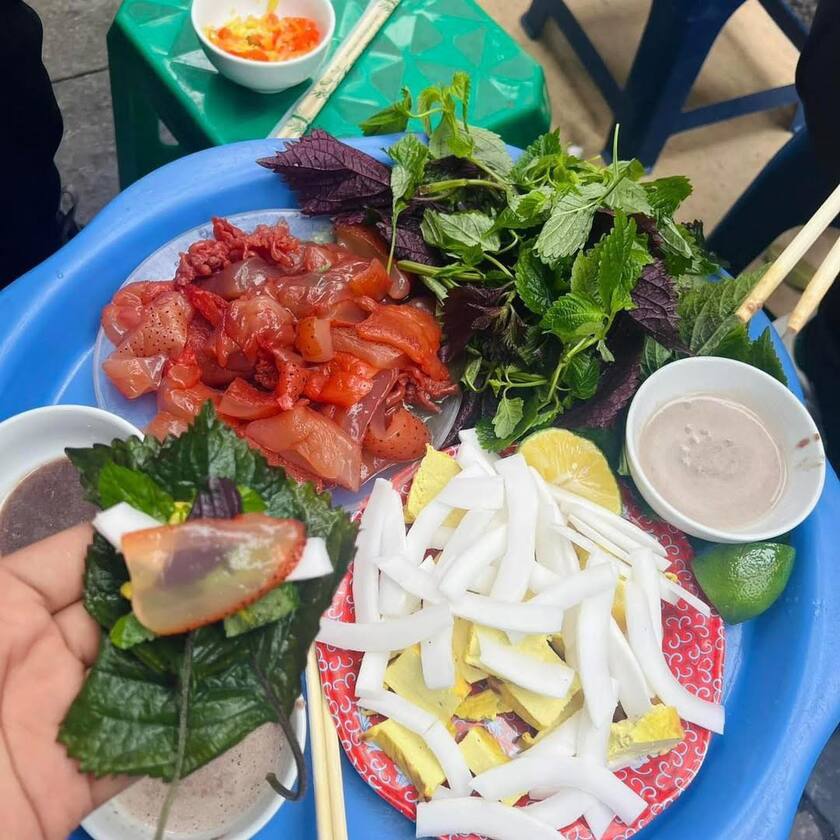
Red milk dish is loved by many young people recently.
Red jellyfish are caught from the sea of Hai Phong and Nam Dinh, where there are rich mangrove forests. After being pulled up from the seabed, the fresh jellyfish are quickly soaked by the locals in a barrel of water mixed with mangrove roots or bark. This secret not only helps to remove the characteristic fishy smell of jellyfish, but also keeps the jellyfish fresh and covered with a brilliant red color, a unique and attractive color.
Although originating from Hai Phong, red jellyfish has captured the hearts of Hanoians, becoming a highly sought-after street food. Food lovers do not hesitate to visit street vendors and small eateries along the roadside to enjoy this special dish.
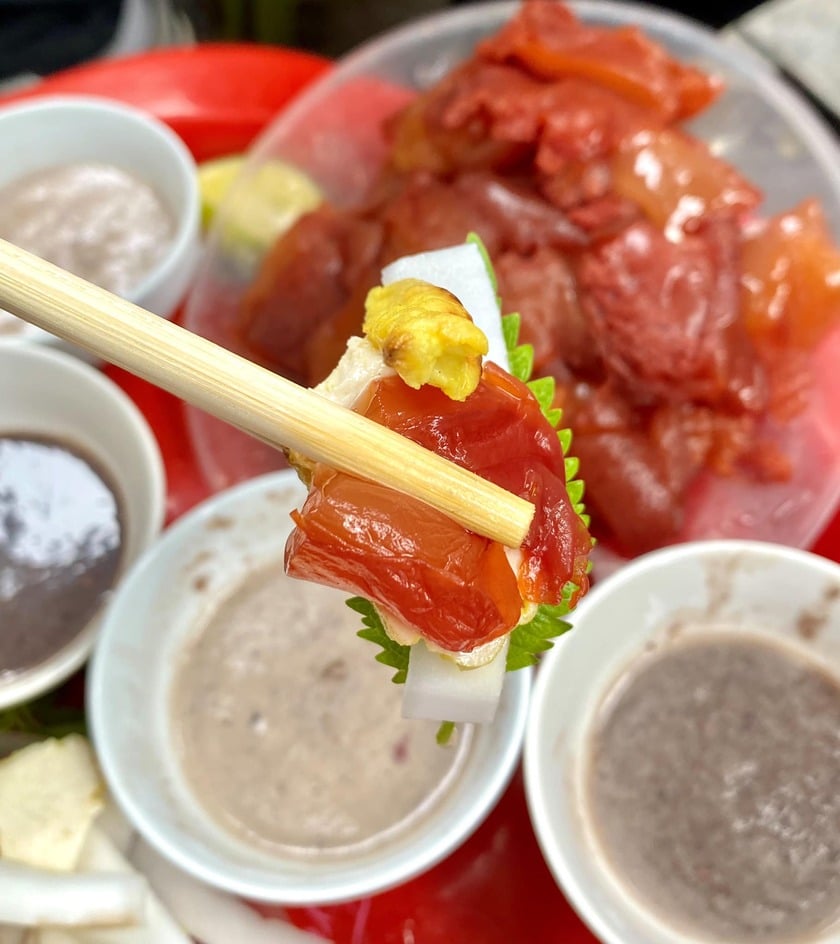
Young people eagerly invite each other to eat and call it "Vietnamese sashimi"
Red jellyfish has a charming beauty with a bright red color, clear as jelly. When enjoying, diners will feel the softness and succulentness of the jellyfish body, along with the crunchy and chewy texture of the jellyfish legs, creating a unique and unforgettable taste experience.
While white jellyfish has become familiar to many people, red jellyfish is a rare dish, appearing only in the seas of Hai Phong and Nam Dinh. To keep the original red color and freshness, local people must process jellyfish meticulously, soaking them in a barrel of water mixed with mangrove roots or bark immediately after catching. The bright red jellyfish, marinated in water with kumquat essential oil, not only helps to remove the fishy smell but also brings a refreshing aroma, stimulating the taste buds.
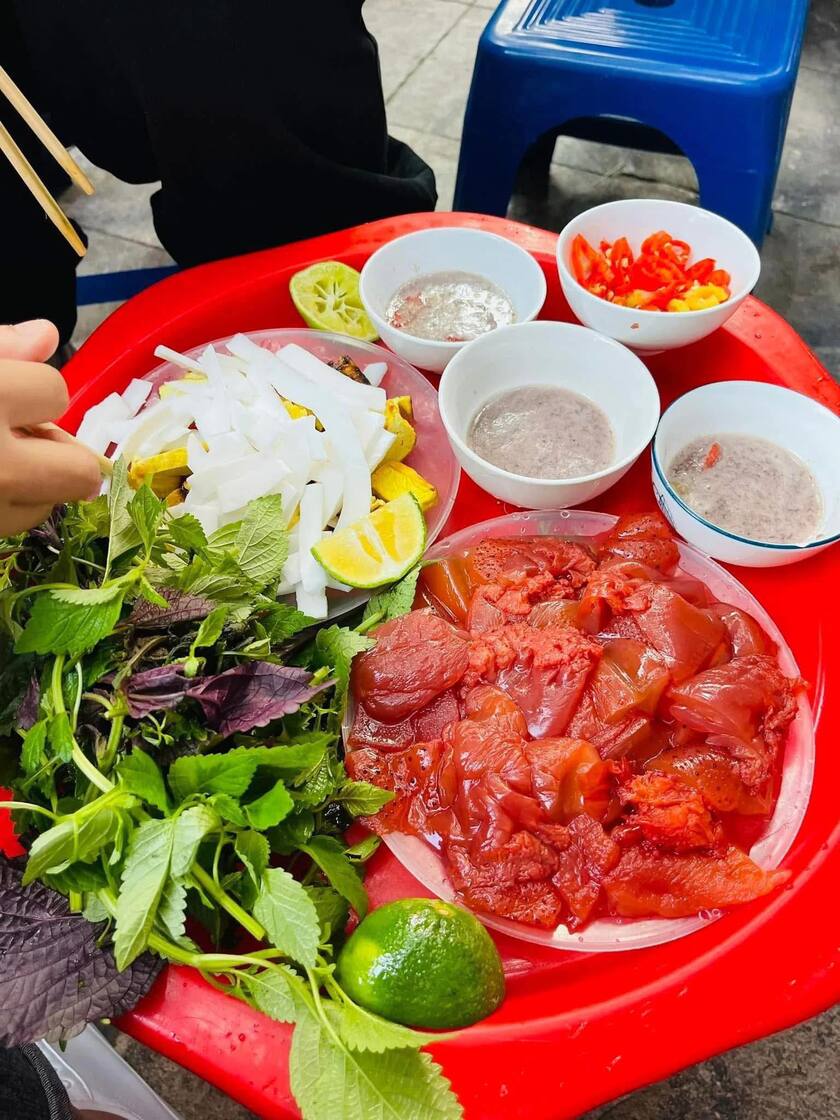
From March to June, red jellyfish is in season, becoming a street food welcomed by many Hanoians.
Every March to May, red jellyfish vendors appear on all the streets of Hanoi, from Duong Thanh, Thanh Ha, Hang Chieu to Dong Xuan market, creating a vibrant and attractive street food scene. In the early summer days of late March, enjoying the cool, crispy red jellyfish is a wonderful experience. The refreshing taste of jellyfish, the rich taste of grilled tofu, the crunchy taste of coconut meat, combined with the aroma of herbs and the rich taste of shrimp paste, create an irresistible symphony of flavors.
The red jellyfish dish only appears for a short period of 2-3 months, making diners appreciate it even more and actively seek to enjoy it. With a reasonable price, ranging from 30,000 to 50,000 VND per portion, red jellyfish becomes a favorite street food of Hanoi people every summer.

Many people commented that the first time they try red jellyfish, they find it a bit bland and difficult to eat, but once they get used to it, they really like it.
In Hanoi, jellyfish is not a product of the thousand-year-old capital. But when enjoyed with the flavor of the old Hanoi, the rustic, simple jellyfish dish with ingredients that can be found right in the countryside gardens unexpectedly becomes a "luxurious" snack, pleasing the most demanding diners of Thang Long. Red jellyfish must be eaten properly, with all the ingredients to fully enjoy its delicious taste. On a tray of red jellyfish, there must be golden grilled turmeric beans, pure white coconut pulp, fresh perilla leaves, and especially delicious shrimp paste. The beans are boiled first and then grilled, creating a unique flavor different from the usual preparation method. The shrimp paste must be mixed with MSG and sticky rice wine in advance according to the secret family ratio of each restaurant, to blend the delicious flavor, and left overnight for the spices to permeate evenly.

Not only does it taste delicious, but the appearance of the red jellyfish is also extremely eye-catching.

When enjoying, diners often squeeze lemon into the shrimp paste, helping to balance the strong taste of the sauce. Then, they use perilla leaves to partially wrap the jellyfish, beans, coconut pulp, and Vietnamese balm, creating a wonderful blend of flavors.
During the hot summer days, especially at the end of jellyfish season, restaurants are often crowded with people who love this dish. They want to enjoy it right away, fearing that if they wait until next year, they will not know if they can still enjoy such delicious red jellyfish. Although not born in the capital, red jellyfish has become a typical and beloved culinary symbol in Hanoi. With more than 100 years of history, this dish is an indispensable part of the culinary culture of the capital.





